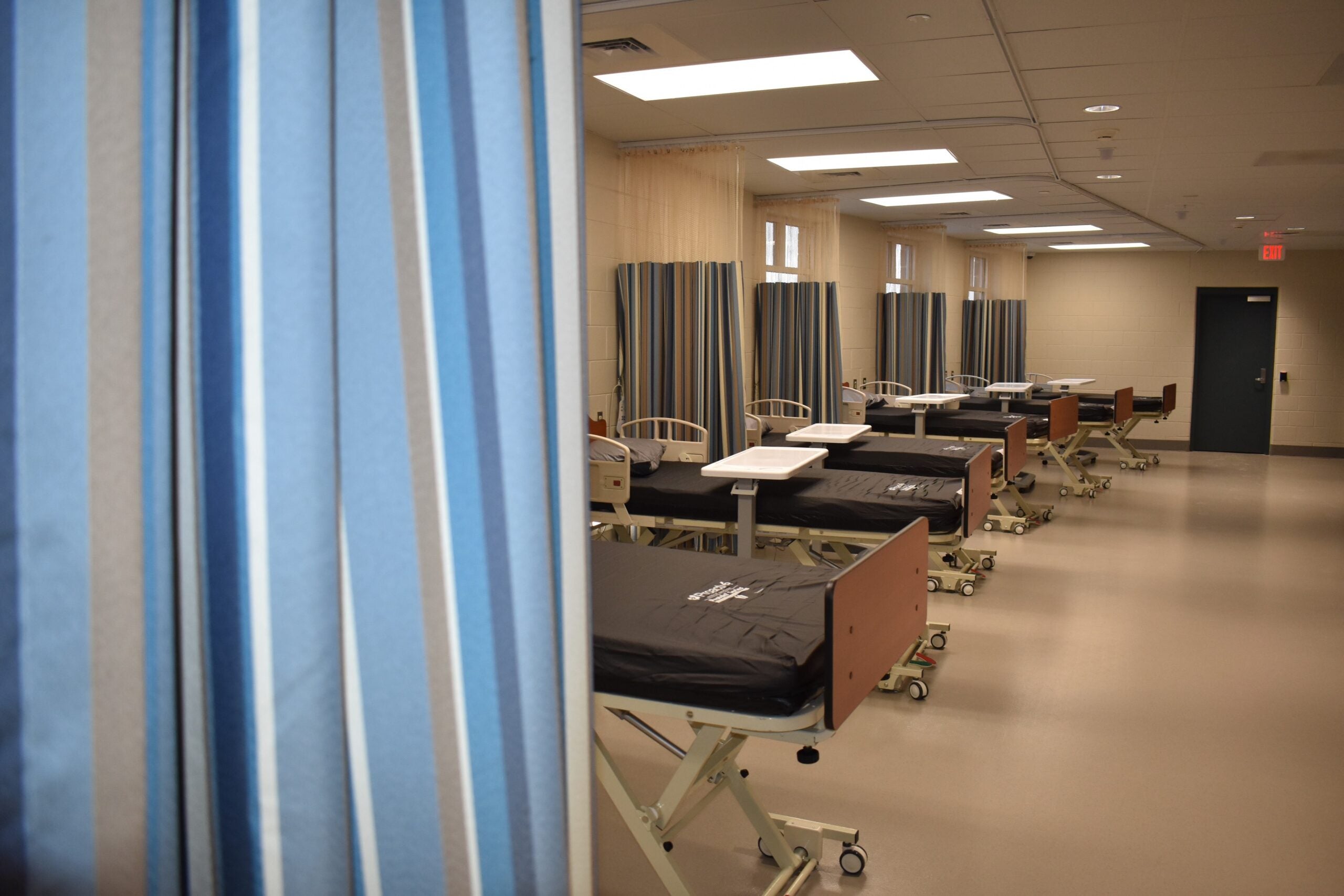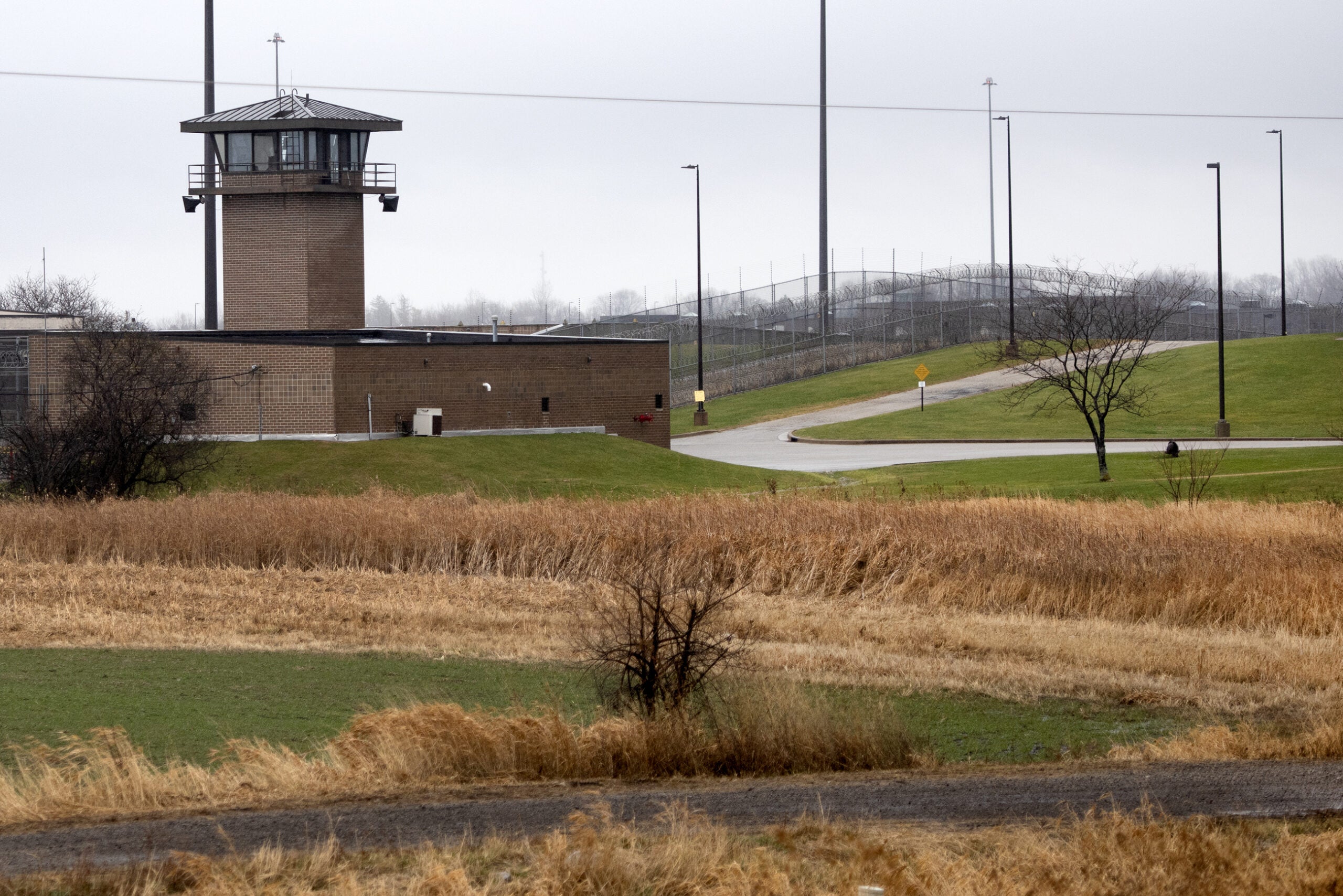A Wisconsin prison is opening an assisted living unit for incarcerated people with advanced medial needs.
The $7 million addition to the Oakhill Correctional Institution in Oregon comes as the state grapples with an aging prison population.
The new unit at the minimum security men’s prison opened late last month with seven patients. Eventually, officials hope to recruit enough staff to reach full capacity, which will include 15 beds for incarcerated men who need rehabilitative care to recover from surgeries or illness.
News with a little more humanity
WPR’s “Wisconsin Today” newsletter keeps you connected to the state you love without feeling overwhelmed. No paywall. No agenda. No corporate filter.
There also will be 50 beds available in an assisted living section of the unit, said Jessica Gross, who oversees health services for the state Department of Corrections.
“This space can be used for any men who may have mobility needs, so, you know, maybe they need help getting from their bed to the bathroom or the shower,” she said, adding the unit will be staffed by nurses, including licensed practical nurses. “The space is fully ADA (Americans with Disabilities Act) compliant. It’s an open space, so there’s not a lot of obstacles. There’s no stairs for people to have to navigate, and it just allows for better movement for our men.”
Timeline for full opening is unclear, as DOC recruits staff
It’s not clear exactly when Oakhill’s assisted needs facility will be running at its full 65-bed capacity, Gross said.
“It’s really going to be dependent on recruitment and when we have applicants that we can bring in,” she said.
The Oakhill unit had previously been slated to open in 2022, according to news reports, but DOC spokesperson John Beard said the process was delayed because of changes to physical design plans.
“After initial construction, some barriers were identified that would limit the ability to properly care for the people in the unit,” Beard wrote in an email.
Roy Rogers, who advocates for criminal justice reform through a nonprofit called The Community, said he believes the new unit is sorely needed. He spent 28 years behind bars in Wisconsin and described the quality of medical care as “pretty bleak,” especially for people with disabilities or chronic conditions.
“Having on-call medical attention is not a reality,” he said. “If you’re having a complication, you’ve got to hope that you can get somebody’s attention to come see about you.”
The situation is made even worse because of how the conditions inside prison harm someone’s well-being, Rogers said.
“The prison system provides you with the bare minimum nutritional value of things,” he said. “You’re not in the best of health, as it is. You’re not getting the appropriate amount of exercise.”
Although the new unit is available only to men in minimum security lock-ups, prison officials are currently managing the medical needs of medium and maximum security inmates within their respective prisons, Gross said.
She also said officials are in the early stages of exploring plans for a dedicated assisted living-type facility at a medium security men’s prison in Racine.
“It’s probably going to be between a year and a half to two years before we could fully open,” Gross said of the Racine plans. “It’s really just going to be dependent on any construction or anything that we need to get up and running.”
Less than 7 percent of the people in Wisconsin prisons are women, according to a 2022 point-in-time report, and female inmates typically receive medical care at an infirmary connected to their prison system, Gross said.
Wisconsin’s prison population is graying
Wisconsin’s aging prison population has skyrocketed in recent decades, both in the number of inmates and as a percentage of the overall prison population.
“Like any other agency that provides health care, we have to adjust to the changing needs of our patients,” DOC Secretary Kevin Carr said in a statement announcing the soft opening of the Oakhilll assisted needs facility. “As their needs change, due to advanced age and accumulation of chronic medical conditions, we have to adapt our health services to meet those needs.”
At the close of 2022, there were 1,804 inmates over 60, representing 8.7 of Wisconsin’s prison population, according to the DOC’s point-in-time report. That compares to 3.4 percent (751 people) at the end of 2010 and 1.6 percent (330 people) at the end of 2000.
The graying trend in Wisconsin’s prison systems mirrors national patterns. The number of people over age 55 incarcerated in state and federal prisons grew 280 percent between 1999 and 2016, according to a review by the Pew Charitable Trusts.
The report attributed the jump to an increase in the number of older people being put in prison, as well as an increased use of longer prison sentences.
In a news release, DOC officials described the trend as a reflection of the country’s shifting demographics.
“Our population mirrors the community, in that it is aging,” Gross is quoted as saying.
But Rogers said it points to a need to change policies and practice on sentencing and early release.
“Why are you holding these people who may no longer pose a threat to society, where there may not be the existence of a public risk?” he said. “Why are they being held this long to the point where we have to continue to spend more money to keep them after they are long past the age and the realm of being a threat to society or a harm to others?”
Wisconsin Public Radio, © Copyright 2026, Board of Regents of the University of Wisconsin System and Wisconsin Educational Communications Board.





